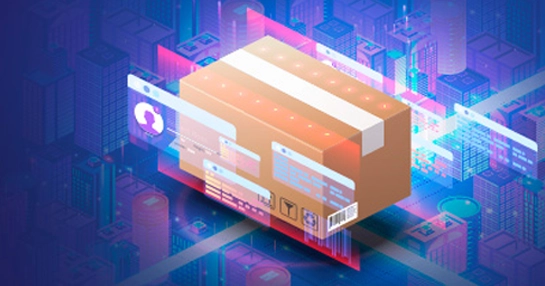-
GEP Software
-
- Procurement Software
- Direct Procurement Software
- Indirect Procurement Software
- Unified Source-to-Pay
- Source-To-Contract Software
- Procure-to-Pay
- Midsize & High Growth Enterprises
- Key Capabilities
- Spend Analysis
- Sourcing
- Contract Lifecycle Management
- Supplier Lifecycle Management
- Third-Party Risk Management
- Purchasing
- Payments
- Data Analytics and Reporting
- Do more with GEP SMART
- Intake Management & Orchestration
- Intelligent Category Management
- Tail Spend Management
- Cost Data & Analytics (GEP COSTDRIVERS)
- AI-First Supply Chain Management
- Supply Chain Visibility and Execution
- Logistics Visibility
- Inventory and Warehouse Management
- GEP Multienterprise Collaboration Network
- Supply Chain Control Tower
- Field Services
- Supply Chain Collaboration & Planning
- Supply Chain Planning
- Purchase Order Collaboration
- Forecast Collaboration
- Capacity Collaboration
- Quality Management Software
- Should-Cost Modeling
- Direct Material Sourcing
-
-
GEP Strategy
-
GEP Strategy
Unrivaled supply chain and procurement expertise + the transformative power of AI
Supply Chain Consulting
- Environmental, Social and Governance
- Sustainability Consulting Services
- Socially Responsible Sourcing
- Scope 3
- Demand and Supply Chain Planning
- Collaborative Planning
- Source To Contract
- Procure To Pay
- Inventory Strategy & Management
- Operations & Manufacturing Excellence
- GEP Total Inventory Management Solution
- Network Strategy & Optimization
- Warehousing & Transportation Management
-
-
GEP Managed Services
-
GEP Managed Services
World-class skills, experience and know-how — amplified by the power of AI
-


Transforming Supplier Partnerships in the Digital-First Economy
In a world where 80% of supplier-buyer interactions will be digital by 2025, procurement leaders face a critical question: How can we maintain meaningful relationships while leveraging the speed and efficiency of digital tools?
This podcast, inspired by insights from Procurement Leaders and GEP, unpacks the challenges and opportunities of building strong supplier partnerships in a digital-first world.
What You'll Hear:
- Adapt to digital procurement while preserving trust.
- Leverage technology to enhance collaboration.
- Build supplier partnerships that drive innovation and resilience.
This is a audio recording of a recent podcast.
PODCAST SUMMARY
This podcast explores how supplier partnerships are transforming in a digital-first economy, with insights drawn from a Procurement Leaders report sponsored by GEP. With 80% of supplier-buyer interactions predicted to be digital by 2025, companies face the dual challenge of leveraging technology for efficiency while maintaining meaningful relationships.
The Digital Shift in Procurement
The shift to digital procurement accelerated during the pandemic and has fundamentally changed how businesses interact with suppliers. While digital tools offer speed and agility, they risk losing the personal connection critical to building trust. For instance, while 44% of millennials are comfortable with fully digital supplier relationships, only 17% of older generations feel the same, highlighting the need for nuanced approaches to partnership-building in a digital landscape.
Four Key Elements of Strong Supplier Partnerships
The report identifies four essential elements for building and maintaining strong supplier relationships:
1. Strategic Alignment: Partnerships thrive when companies share values, long-term goals, and visions for the future. Misaligned goals, such as differing priorities on speed versus quality, can derail collaborations. Transparency about culture, risk tolerance, and limitations is vital to ensure alignment from the outset.
2. Innovation Potential: Successful partnerships leverage complementary strengths to create new opportunities. For example, a startup with innovative technology could collaborate with an established company with extensive distribution networks, achieving more together than either could alone.
3. Superior Performance: Beyond meeting deadlines and budgets, exceptional partners proactively anticipate and address potential issues. This forward-thinking approach demonstrates a commitment to mutual success and fosters trust.
4. Willingness to Collaborate: Effective partnerships require open communication, flexibility, and a commitment to solving challenges together. Even in a digital environment, signs of collaboration include responsiveness, clarity, and adaptability during virtual interactions.
Maintaining Human Connections in a Digital World
While digital tools streamline processes, meaningful connections remain central to successful supplier relationships. Companies must focus on intentional interactions to maintain trust and collaboration:
• Virtual Communication: Thoughtfully planned video calls and workshops can foster understanding and connection. Observing communication styles, tone, and responsiveness during these interactions offers insights into a supplier’s culture.
• Transparency and Openness: Being upfront about challenges and limitations, even in digital interactions, helps build trust and alignment.
• Digital Tools as Enhancers: Technology should complement rather than replace human relationships, enabling efficiency without sacrificing personal connection.
Key Takeaways
1. Resilience is Key: Recognize the increasing role of technology while finding ways to preserve human elements in supplier relationships.
2. Collaboration Over Competition: Prioritize suppliers with shared goals, innovation potential, and a proactive approach to performance.
3. Embrace Innovation: Use digital tools to enhance, not replace, meaningful communication and partnership-building.
4. Holistic Value: Create dedicated moments to build trust and ensure alignment, even in a predominantly digital environment.
By balancing digital efficiency with intentional relationship-building, companies can cultivate supplier partnerships that drive innovation, resilience, and long-term success.
TO LISTEN, Please Enter your EMAIL
JUST A FEW MORE THINGS ABOUT YOU









